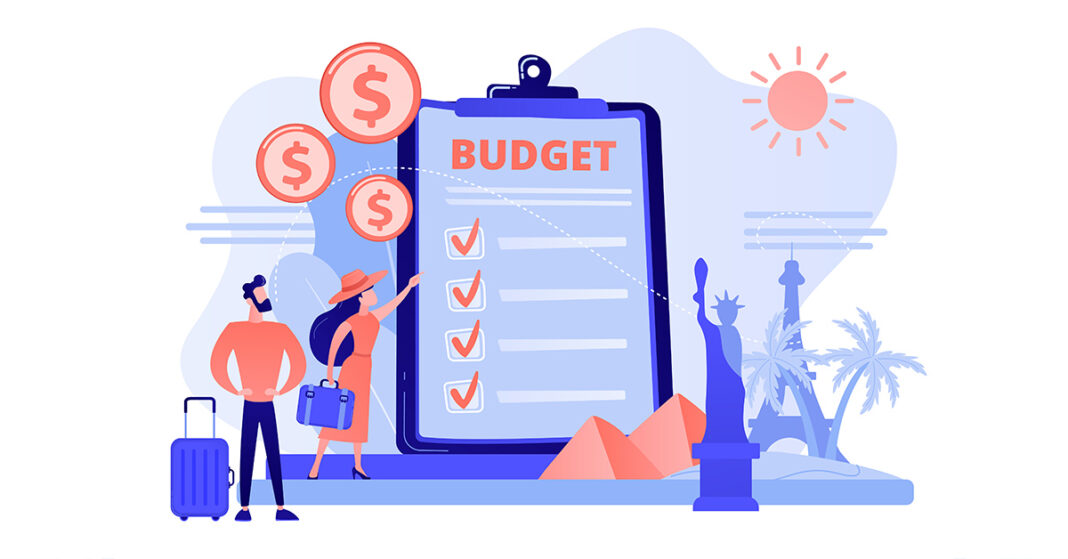Budgeting is a critical skill for anyone who wants to manage their finances effectively. Here is a beginner’s guide to budgeting that can help you get started:
1. Understand your income:
Understanding your income is the first step in creating a budget. To understand your income, you need to calculate your total monthly income, which includes all sources of income such as your salary, wages, bonuses, commissions, rental income, interest income, and any other sources of income.
If you have a regular job, your monthly income is usually your net income after taxes and other deductions. You can find this information on your pay stub or by checking your bank account for direct deposits.
If you have irregular income, such as income from freelancing or self-employment, you can estimate your monthly income based on your average earnings over the past few months. It’s important to be conservative when estimating your income and to factor in fluctuations and uncertainties.
Once you have calculated your monthly income, you can use this information to create a budget that aligns with your financial goals. This will help you determine how much you can allocate for expenses, savings, and other financial obligations. It’s important to be realistic and flexible when creating a budget, as unexpected expenses can arise. Therefore, it’s recommended that you review your budget regularly and adjust it as necessary.
2. Track your expenses:
Tracking your expenses is an essential part of budgeting. To track your expenses, you need to record all of your expenditures for a given period, such as a week or a month. This includes everything from big-ticket items like rent or mortgage payments to small purchases like coffee or snacks.
There are several methods for tracking expenses, including:
- Pen and paper: You can keep track of your expenses using a notebook or a planner. Write down the date, the amount spent, and a brief description of the expense.
- Spreadsheet: You can create a simple spreadsheet using Microsoft Excel or Google Sheets to track your expenses. This can be especially useful if you want to categorize your expenses or create graphs and charts to visualize your spending.
- Budgeting app: There are several budgeting apps available that can help you track your expenses automatically. These apps can connect to your bank account and credit cards to categorize your expenses and provide insights into your spending habits.
- Receipts: Keep all of your receipts and bills in a designated folder or envelope. This can help you stay organized and ensure that you don’t miss any expenses.
Regardless of the method you choose, make sure to record all of your expenses accurately and consistently. Review your expenses regularly and compare them to your budget to ensure that you’re staying on track. This can help you identify areas where you may be overspending and make adjustments to your budget as necessary.
3. Categorize your expenses:
Categorizing your expenses is a crucial step in budgeting. By categorizing your expenses, you can understand where your money is going and identify areas where you may be overspending. Here are some common categories for expenses:
- Housing: This includes your rent or mortgage payment, property taxes, homeowner’s insurance, and maintenance costs.
- Utilities: This includes your electricity, gas, water, and internet bills.
- Transportation: This includes your car payment, gas, car insurance, and public transportation expenses.
- Food: This includes your groceries, dining out, and snacks.
- Entertainment: This includes your movies, concerts, and hobbies.
- Personal care: This includes your gym membership, haircuts, and beauty products.
- Insurance: This includes your health, life, and disability insurance.
- Debt: This includes your credit card payments, student loans, and other debts.
- Savings: This includes your contributions to retirement accounts, emergency funds, and other savings goals.
- Miscellaneous: This includes any other expenses that don’t fit into the above categories.
Once you have categorized your expenses, you can compare them to your budget and identify areas where you may be overspending. This can help you make adjustments to your budget and prioritize your spending to achieve your financial goals.
4. Set financial goals:
Setting financial goals is an essential part of budgeting. Without specific goals, it can be challenging to know where to focus your efforts and how to measure your progress. Here are some steps to help you set financial goals:
- Identify your short-term and long-term goals: Short-term goals are typically things you want to achieve within the next year, while long-term goals are usually things you want to achieve in the next 5-10 years. Examples of short-term goals could include saving for a vacation or paying off credit card debt, while long-term goals could include saving for a down payment on a home or building a retirement fund.
- Make your goals specific and measurable: Your goals should be specific, with clear targets and deadlines. For example, instead of saying, “I want to save money,” set a specific goal such as, “I want to save ₹5,000 for a down payment on a home by the end of the year.”
- Prioritize your goals: Once you have identified your goals, prioritize them based on their importance and urgency. This can help you focus your efforts and allocate your resources accordingly.
- Break down your goals into actionable steps: To achieve your goals, break them down into smaller, more manageable steps. For example, if your goal is to pay off credit card debt, you could break it down into steps such as creating a budget, reducing your expenses, and making extra payments on your credit card.
- Track your progress: Regularly track your progress towards your goals and adjust your budget and strategies as necessary. Celebrate your successes along the way to help stay motivated and focused on your goals.
By setting financial goals and creating a plan to achieve them, you can take control of your finances and work towards a more secure financial future.
5. Create a budget:
Creating a budget is a critical step in managing your finances. A budget helps you understand your income and expenses, identify areas where you can save money, and achieve your financial goals. Here are some steps to help you create a budget:
- Calculate your income: Start by calculating your total income for a given period, such as a month. Include all sources of income, such as your salary, freelance work, rental income, and any other income streams.
- Determine your fixed expenses: Fixed expenses are recurring expenses that stay the same each month, such as rent or mortgage payments, car payments, and insurance premiums. Write down all of your fixed expenses and their amounts.
- Determine your variable expenses: Variable expenses are expenses that can change from month to month, such as food, entertainment, and clothing. Estimate your variable expenses based on your past spending habits or by tracking your expenses for a few weeks.
- Set spending limits: Based on your income and expenses, set spending limits for each category of expenses. Be realistic about your limits and make sure you have enough money left over for savings and unexpected expenses.
- Prioritize your spending: Prioritize your spending based on your goals and values. Make sure to allocate enough money towards your financial goals, such as paying off debt or building an emergency fund.
- Track your spending: Once you have created a budget, track your spending to ensure you are staying within your limits. Use a budgeting app, spreadsheet, or a pen and paper to record your expenses and compare them to your budget.
- Adjust your budget as necessary: If you find that you are consistently overspending in a particular category, adjust your budget by reducing your spending in other areas or increasing your income.
Creating a budget can take some effort, but it’s an essential step in managing your finances and achieving your financial goals. Keep reviewing and updating your budget regularly to stay on track and make progress towards your goals.
6. Stick to your budget:
Sticking to your budget is crucial to achieving your financial goals and improving your financial health. Here are some tips to help you stay on track with your budget:
- Track your expenses: Keep track of your expenses by using a budgeting app, spreadsheet, or pen and paper. This will help you to stay aware of how much money you are spending and whether you are staying within your budget.
- Review your budget regularly: Review your budget regularly to see if you are on track and if you need to make any adjustments. A budget is a flexible tool that can be adjusted to reflect changes in your income, expenses, and financial goals.
- Set realistic goals: Be realistic about your goals and don’t set yourself up for failure. If you set goals that are too ambitious, you may become discouraged and give up on your budget.
- Prioritize your spending: Prioritize your spending based on your goals and values. Make sure you allocate enough money towards your financial goals, such as paying off debt, building an emergency fund, or saving for retirement.
- Avoid impulse purchases: Avoid impulse purchases by giving yourself time to think before making a purchase. If you see something you want, wait 24 hours before making the purchase. This can help you to determine whether it’s something you really need or something you can do without.
- Find ways to save money: Look for ways to save money on your fixed and variable expenses. For example, you can save money on groceries by using coupons or shopping at discount stores. You can also save money on your utilities by turning off lights and appliances when not in use.
- Stay motivated: Stay motivated by reminding yourself of your financial goals and the progress you have made towards achieving them. Celebrate your successes along the way, such as paying off a credit card or reaching a savings milestone.
Sticking to your budget takes discipline and commitment, but it’s worth it in the long run. By sticking to your budget, you can improve your financial health, reduce your debt, and achieve your financial goals.
7. Use budgeting tools:
There are many budgeting tools available that can help you create and stick to a budget. Here are some popular options:
- Mint: Mint is a free app that helps you track your expenses and create a budget. It automatically categorizes your expenses and sends you alerts when you exceed your budget in a particular category.
- Personal Capital: Personal Capital is a free app that helps you track your spending and investments. It provides a comprehensive view of your finances, including your net worth, cash flow, and retirement savings.
- YNAB: YNAB (You Need a Budget) is a paid app that helps you create a budget and stick to it. It emphasizes the importance of giving every dollar a job and encourages you to prioritize your spending based on your goals.
- EveryDollar: EveryDollar is a free app created by financial guru Dave Ramsey. It helps you create a budget and track your expenses in real-time.
- PocketGuard: PocketGuard is a free app that helps you track your spending and set spending limits. It automatically categorizes your expenses and provides insights into your spending habits.
Using a budgeting tool can help you to create a realistic budget, track your expenses, and stay on top of your finances. Find the tool that works best for you and make use of its features to improve your financial health.
Remember that budgeting is a process, and it may take time to get the hang of it. But with patience and perseverance, you can develop good budgeting habits and achieve your financial goals.







